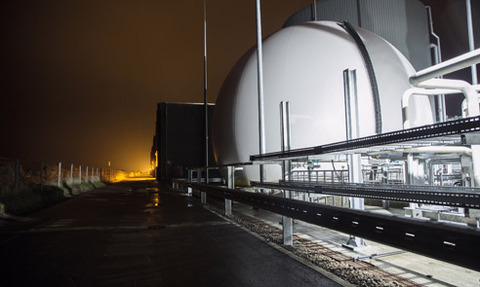Turning whisky into (waste)water
26 Jun 2018

Glemorangie distillery is famous as the home of one of the great Scottish whiskies. Now, with help from Aquabio, it's a wastewater treatment pioneer too...
Producer of the most famous malt produced in the Highlands whisky region of Scotland, Glenmorangie (with a stress on the second syllable) distillery in Tain, Ross-shire needs an average of 10 to 12 litres of water to produce one litre of whisky.
With the distillery producing 4-5 million litres of whisky per annum, that means a lot of polluted waste water and the company was concerned to improve the quality of the effluent being discharged into the nearby Dornoch Firth.
So it turned for help to Aquabio, experts in advanced systems for the treatment and reuse of industrial wastewater.
Aquabio’s anaerobic membrane bioreactor system (AnMBR LE™) was chosen for the task as part of Glenmorangie’s Dornoch Environmental Enhancement Project - the first time the technology had been used in the whisky industry.
The plant opened last summer, boasting the use of natural biological processes which both reduces chemical oxygen demand (COD) output in distillery wastewater by up to 95 per cent and creates energy in the form of methane rich biogas. The biogas replaces some of the fossil fuels used at the distillery to heat the stills in which the spirit is made.
Microorganisms in the bioreactor are able to degrade 11.7 tonnes of chemical oxygen demand in the polluted wastewater every day. In the process, they produce 3500 cubic metres of biogas every day.
Terry McCarthy, managing director of Aquabio explained : “The low energy AnMBR LE is designed to improve the quality of the effluent being discharged into the Dornoch Firth and the resulting biogas is reused as fuel in the site boiler system.”
Conventional blowers used more than 21 per cent more electricity to deliver an equivalent amount of air compared to the Lontra Blade Compressor.
The technology with its ultra-filtration tubular membranes has helped Glenmorangie achieve its objectives of protecting the environment in which it operates. The plant now largely operates automatically and can be remotely monitored on line, ensuring optimum efficiency in both wastewater treatment and power generation.
Other highlights include :
- An oyster bed that is being developed to clean up the remainder of the 5 per cent of the COD load
- Enhanced biodiversity within the Dornoch Firth through a combination of waste treatment process and regeneration of a biogenic oyster reef
The reef also acts as a large bio fliter to protect the shoreline close to the distillery buildings from potential global warming effects from higher seas.
As a result, DEEP won the Hydro Nation Award at last year’s 18th annual Scottish Environment Business Awards which honour businesses that are contributing to Scotland’s sustainable environment.
Dr Peter Nelson, operations director of The Glenmorangie Company said : “The Glenmorangie Company has a strong commitment to building a sustainable future. The water treatment facility at Tain has been a significant step towards that future and we are delighted with the performance of the Aquabio technology as part of a broader commitment to minimising our environmental footprint."

